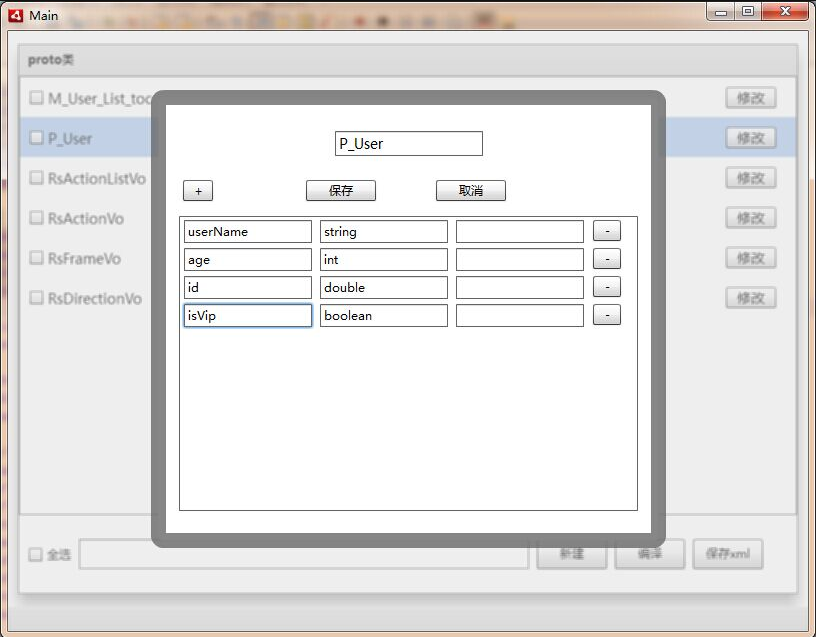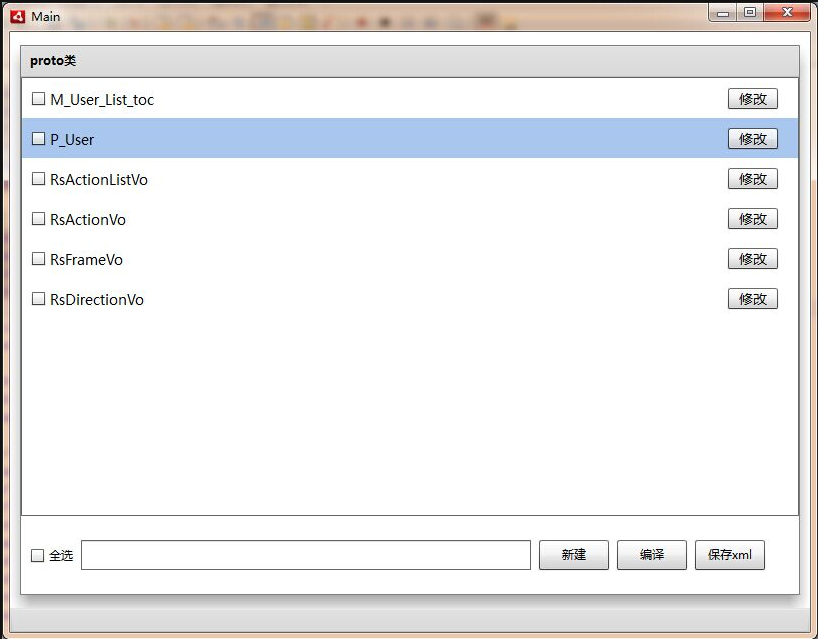网络游戏的前后端通讯(一)
【旧博客转移 - 发布于2015年9月14日 22:25】
通讯是网络游戏的最重要部分之一,好的游戏通讯协议设计包括一下特点:包体积小、解析速度快、支持加解密等等,下面就简单说一下通讯协议的设计
1.游戏中常用的通讯协议以及数据格式
HTTP:
早期的SLG游戏一般会采用HTTP协议进行通讯,后端大多采用PHP,通讯格式用XML、JSON等字符串,由于HTTP是短链接,所以没办法做到服务端主动更新数据推送给客户端,那种需要实时更新的数据,一般都采用客户端定时请求来实现。
Tcp/IP:
随之MMO游戏兴起,对游戏实时交互的要求越来越高,Tcp这种长连接协议被广泛采用,通过Socket接口,我们可以跟服务端建立起长连接,这种双向连接很方便实时交互以及服务端主动推送数据,基于这种协议的通讯格式可以是XML、JSON,但大部分都采用直接把对象序列化成二进制的方式传输。常用的二进制序列化格式有AMF(Adobe公司创造)、protobuf(谷歌创造)。protobuf由于包体积小,解析速度快等优势被广泛使用,当然也可以自己去实现一套通讯格式。
2.自定义格式的序列化跟反序列化
序列化就是把一个对象以某种形式编码成二进制,用于存储或者传输。
反序列化顾名思义就是把二进制数据解码成对象。
复合型数据(自定义对象)都会由一些基本数据类型组成,我把它们分为固定长度型跟动态长度型
固定长度如:
byte(8位), short(16位), int(32位), float(32位), long(64位), boolean(8位)
不固定长度:
String, Array
下面是一个把基础类型转换成二进制的工具类,String类型的话就要先写长度再写UTF数据
1 package com.util; 2 3 import java.io.ByteArrayInputStream; 4 import java.io.ByteArrayOutputStream; 5 import java.io.IOException; 6 import java.io.UnsupportedEncodingException; 7 /** 8 * 二进制工具类 9 * @author lijia 10 */ 11 public class ByteArrayUtil { 12 13 /** 14 * 把字符串转换成byte[] 15 * @param str 字符串 16 * **/ 17 public static byte[] writeUTF(String str){ 18 ByteArrayOutputStream byteArr = new ByteArrayOutputStream(); 19 byte[] rb = null; 20 try { 21 if(str == null || str == ""){//字符串为空 22 byteArr.write(writeInt(0));//写入长度为0 23 }else{ 24 byte[] strbyte = str.getBytes("UTF-8"); 25 byteArr.write(writeInt(strbyte.length));//写入字符串长度 26 byteArr.write(strbyte);//写入字符串二进制数据 27 } 28 rb = byteArr.toByteArray(); 29 byteArr.close(); 30 } catch (UnsupportedEncodingException e) { 31 e.printStackTrace(); 32 } catch (IOException e) { 33 e.printStackTrace(); 34 } 35 return rb; 36 } 37 38 /** 39 * 读取字符串 40 * **/ 41 public static String readUTF(ByteArrayInputStream ips){ 42 int strLen = readInt(ips);//先读长度 43 String str = ""; 44 if(strLen>0) 45 try { 46 byte[] strByte = new byte[strLen]; 47 ips.read(strByte, 0, strLen); 48 str = new String(strByte, "UTF-8"); 49 } catch (UnsupportedEncodingException e) { 50 e.printStackTrace(); 51 } 52 return str; 53 } 54 55 public static byte[] writeLong(long s) { 56 byte[] buf = new byte[8]; 57 for (int i = 8 - 1; i >= 0; i--) { 58 buf[i] = (byte) (s & 0x00000000000000ff); 59 s >>= 8; 60 } 61 return buf; 62 } 63 64 public static long readLong(ByteArrayInputStream ips){ 65 byte[] buf = new byte[8]; 66 ips.read(buf, 0, 8); 67 long r = 0; 68 for (int i = 0; i < 8; i++) { 69 r <<= 8; 70 r |= (buf[i] & 0x00000000000000ff); 71 } 72 return r; 73 } 74 75 public static byte[] writeInt(int s) { 76 byte[] buf = new byte[4]; 77 for (int i = 4 - 1; i >= 0; i--){ 78 buf[i] = (byte) (s & 0x000000ff); 79 s >>= 8; 80 } 81 return buf; 82 } 83 84 public static int readInt(ByteArrayInputStream ips) { 85 byte[] buf = new byte[4]; 86 ips.read(buf, 0, 4); 87 int r = 0; 88 for (int i = 0; i < 4; i++) { 89 r <<= 8; 90 r |= (buf[i] & 0x000000ff); 91 } 92 return r; 93 } 94 95 /**** 96 * 连接两个字节数组 97 * @param b 98 * @param b2 99 * @return 100 */ 101 public static byte[] connectByteArray(byte[] b, byte[] b2){ 102 int blen = b.length; 103 int b2len = b2.length; 104 byte[] nb = new byte[blen+b2len]; 105 for(int i = 0; i < blen; i++){ 106 nb[i] = b[i]; 107 } 108 for(int i = 0; i < b2len; i++){ 109 nb[blen+i] = b2[i]; 110 } 111 return nb; 112 } 113 }
下面这个P_User的类包含三个属性:id,age,isVip
两个函数:
ToBinary
按照一定的顺序把对象的各个成员属性转换成二进制写入流中
FromBinary
按照顺序把二进制转换成真实数据
package com.coolProto; public class P_User extends Message { public P_User() { } public int age; public double id; public boolean isVip; @Override public void ToBinary(MessageOutputByteArray osData) { write_int(osData, this.age); write_double(osData, this.id); write_boolean(osData, this.isVip); } @Override public void FromBinary(MessageInputByteArray isData) { this.age = read_int(isData); this.id = read_double(isData); this.isVip= read_boolean(isData); } }
这样就可以序列化一个对象了,当然这种类可以写一个工具自动生成。
用XML做配置
属性名,属性类型,值(数组类型用)
<root> <proto name="M_User_List_toc"> <attribute name="id" type="double" value="null"/> <attribute name="a" type="string"/> <attribute name="b" type="string"/> <attribute name="skillList" type="array" value="int"/> <attribute name="userList" type="array" value="P_User"/> </proto> <proto name="P_User"> <attribute name="userName" type="string"/> <attribute name="age" type="int"/> <attribute name="id" type="double"/> <attribute name="isVip" type="boolean"/> </proto> </root>

这是之前写过的一个工具,用来编辑这种XML配置,支持编译成三种格式(As3、c#、Java)
待续...
转载请注明出处: 李嘉的博客 - http://www.cnblogs.com/lijiajia




